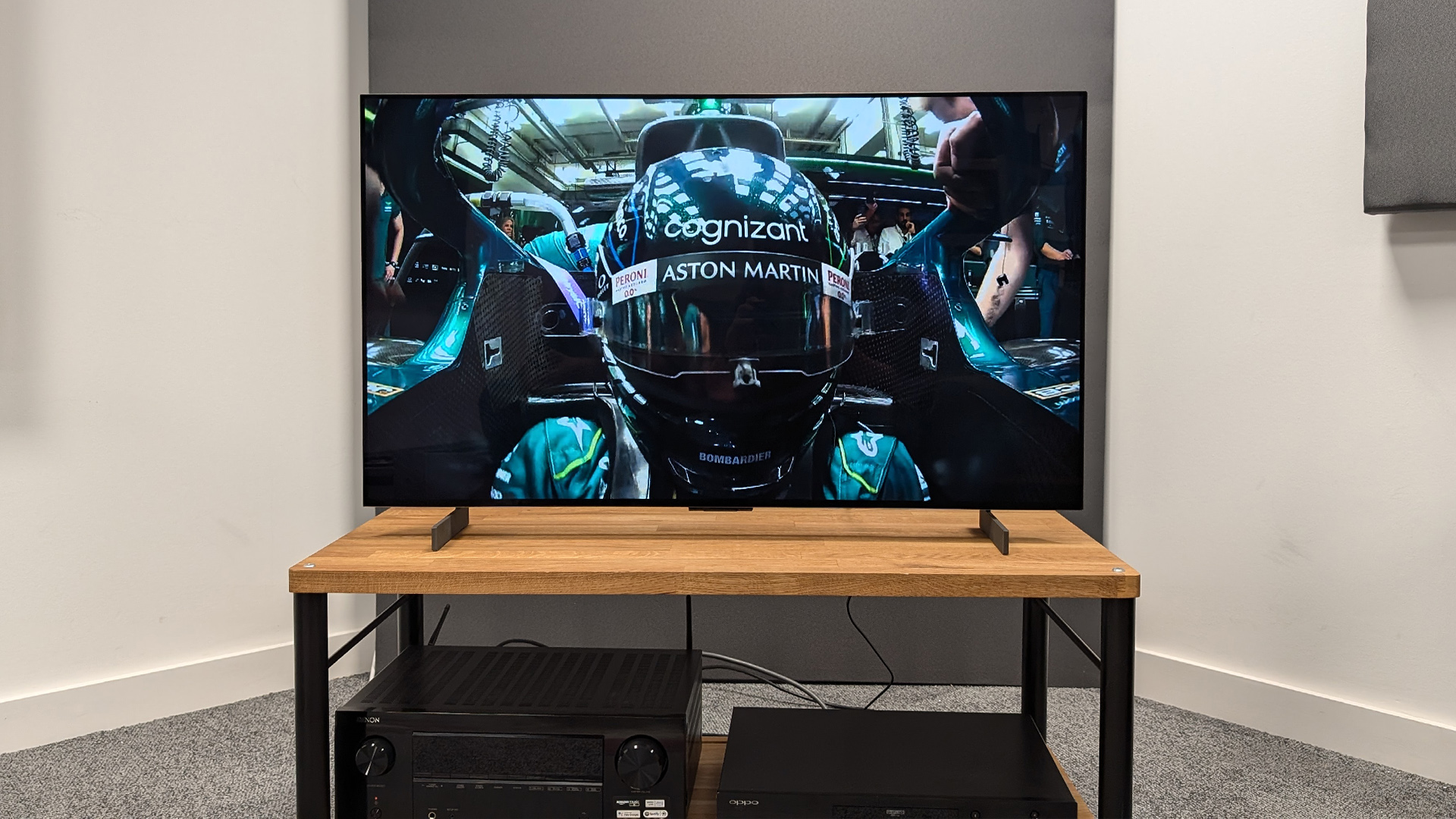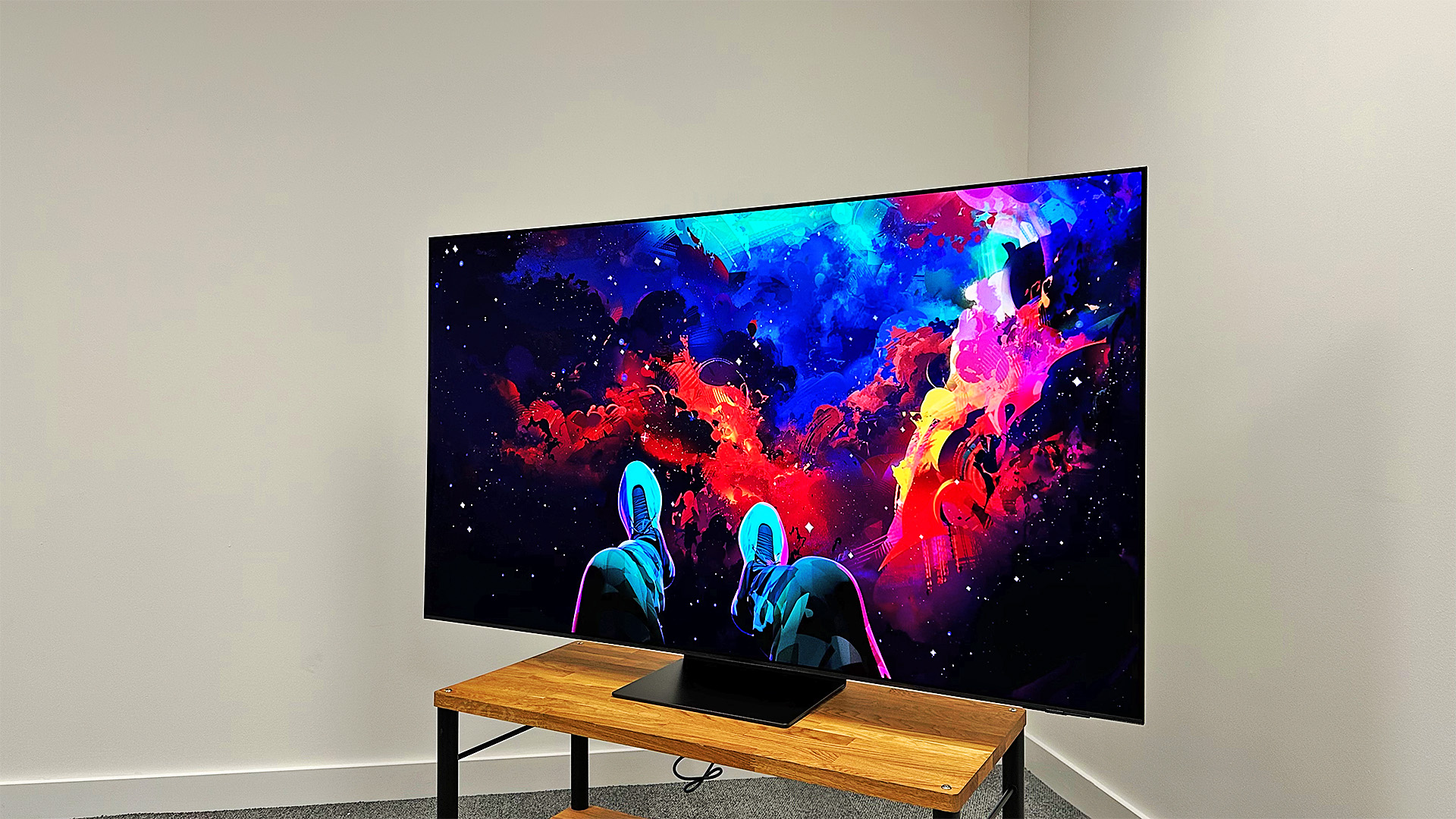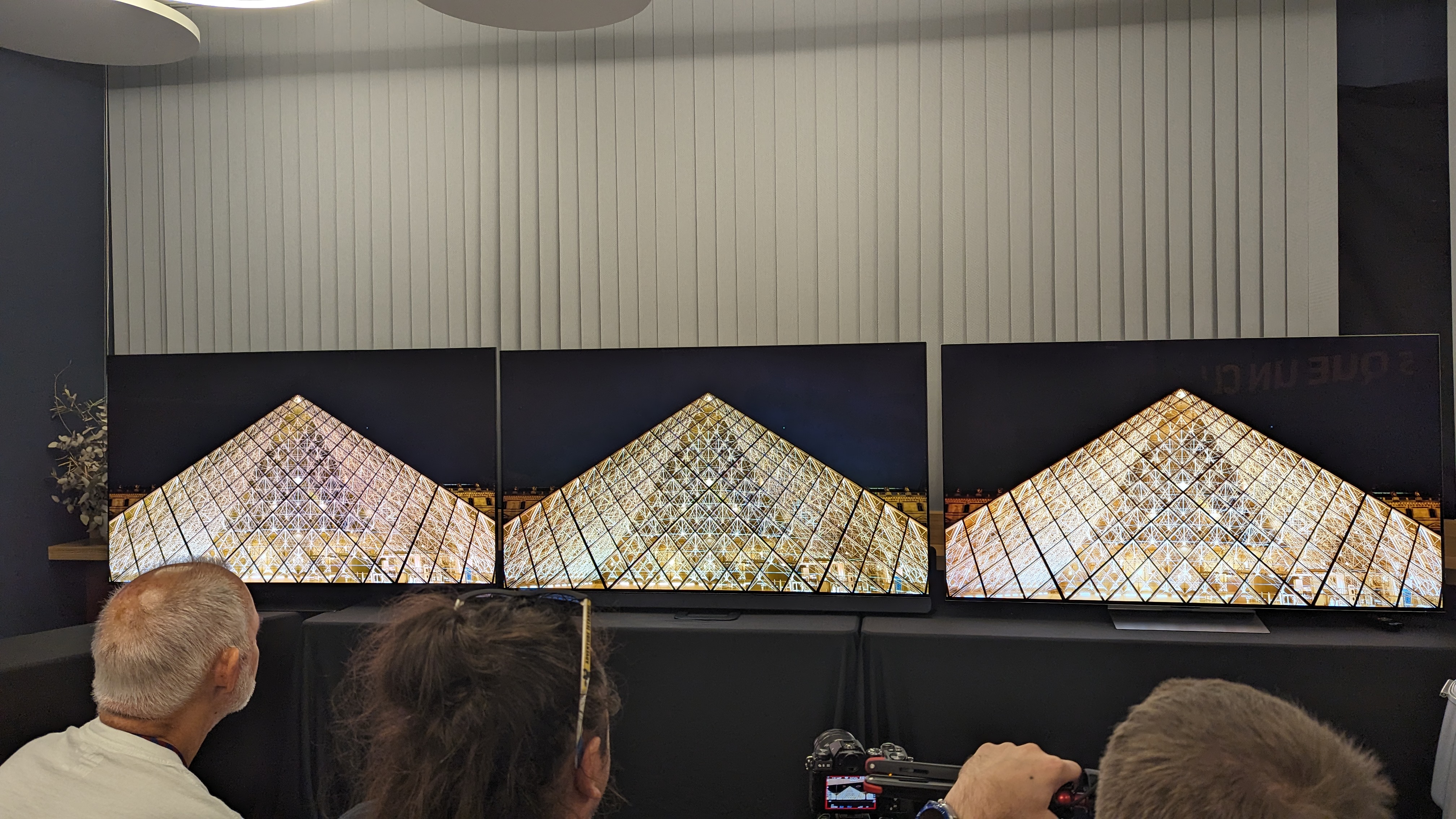
Have you ever wondered why the picture on an OLED TV always looks so good? It may surprise you to discover that the punchiness of the images isn’t primarily due to resolution, colours or even high dynamic range. No, the real foundation of OLED’s appeal is its fantastic contrast performance. But what is contrast, how is it measured, and why is it crucial to delivering the best possible picture quality?
Read on to learn everything you need to know about contrast.
What is contrast?
In its simplest terms contrast is how the brightness of an object compares (or contrasts) to the brightness of its background. Think of a white circle against a black background and you get the general idea. The deeper the blacks and the brighter the whites, the wider the dynamic range and the greater the contrast of the image.
While the human eye is rather poor at distinguishing between the absolute luminance or brightness of an image, it’s very sensitive to the relative contrast of that image. This is why a display with a good contrast performance instinctively looks better, even if we aren’t consciously aware of why it’s more appealing.
This is one of the main strengths of High Dynamic Range (HDR), because the format is designed to widen the contrast of an image by providing greater latitude in the darker shades and significantly increasing the brightness of the lighter shades. The result is an image that has more visual ‘pop’ compared to Standard Dynamic Range (SDR).
What is contrast ratio?
In order to evaluate the contrast performance between different displays you need a quantifiable measurement, which is called the contrast ratio. This is represented as a number calculated by dividing the brightest shade of white by the darkest shade of black.
The higher the contrast ratio, the better the contrast performance. For example, a TV or projector with a contrast ratio of 10,000:1 has a contrast performance that is technically ten times better than that of one with a measured contrast ratio of only 1000:1.
Of course, it’s not quite that simple. For a start, there are two methods of measuring the contrast ratio, with one being less susceptible to manipulation than the other. In addition, display manufacturers also have a tendency to exaggerate the contrast ratio numbers in their marketing.
We’ll start by explaining the two methods of measuring the contrast ratio, before highlighting how these measurements are often manipulated to achieve higher numbers. Hopefully, this will make it easier to compare marketing specifications when choosing your next TV or projector.

How is a display’s contrast ratio measured?
The most commonly quoted measurement is the on/off contrast ratio. As the name suggests it’s composed of two measurements – peak white (on) divided by black (off). It’s easy to measure and gives an accurate representation of a display’s ability to show contrast between one frame and the next. For this reason, it’s sometimes referred to as the inter-frame contrast ratio.
The second is the ANSI contrast ratio, which involves displaying a black-and-white checkerboard and measuring each square. You then take the average of the white squares and divide it by the average of the black squares to come up with the contrast ratio. It takes longer to get a measurement but gives a better representation of the contrast ratio within an image (intra-frame).
The on/off contrast ratio will always be larger than the ANSI measurement, which is why this number is usually the one quoted in marketing specifications. However, the ANSI contrast ratio gives a more accurate representation of a display’s actual capabilities because the TV or projector is displaying both black and white simultaneously. It’s also the harder of the two measurements to manipulate.
How do manufacturers maximise contrast measurements?
Since contrast is essentially white divided by black, the brighter you can make the lighter shades and the deeper you can make the darker shades, the larger the number. This is especially true of the on/off contrast ratio, because if you literally turn off the light when measuring black you can claim a very high on/off contrast ratio. In fact, if you remember your maths classes at school you’ll know that when you divide any number by zero you get infinity.
In the case of OLED, each individual pixel is self-emissive, which means it produces its own light and when displaying black it’s literally turned off. As a result, an on/off contrast ratio of infinity is a possibility. At the very least, a number in the hundreds of thousands can be achieved. It may not hit infinity because when measuring black there could be a slight afterglow, but it’s close enough.
This isn’t the case with an LCD TV or a projector where light is being passed through a panel, making it virtually impossible to block out all the light when displaying absolute black. With LCD TVs, the manufacturers have added independent LED zones in the backlight and local dimming systems to improve perceived contrast. In the case of projectors, the use of a laser light source with dynamic dimming provides the ability to instantaneously turn it off when displaying black.
However, while these tricks result in larger on/off contrast ratio numbers they don’t necessarily reflect real-world content. The backlight in an LCD TV or laser light source in a projector can be turned off to make the black measurement better, but unless you’re looking at a black screen it doesn’t really result in improved contrast with actual images.
In marketing specifications, on/off contrast measurements taken using local dimming or a laser-powered light source are often referred to as the dynamic contrast ratio. But what you really need is the native contrast ratio, calculated using measurements taken with any local dimming or dynamic laser features turned off because this will better represent the display’s inherent abilities.
So, when scanning through the marketing specifications for a TV or projector, you ideally want to see the ANSI contrast ratio – or at least the native on/off contrast ratio. If, instead, there are only numbers for the dynamic contrast ratio, you should probably take those with a pinch of salt.

Which displays deliver the best contrast?
If you’ve read this far you’ve probably already realised that OLED delivers the best contrast ratios due to the technology’s self-emissive nature. Micro LED also falls into this category but, at current prices, you’ll need to take out a second mortgage to buy a display using this technology.
These days, LCD TVs are getting better thanks to independent LED zones and local dimming algorithms, but the effectiveness will depend on the number of zones and the software and hardware controlling them. Modern Mini LED TVs often have zones that number in the hundreds and even thousands, but those numbers still pale in comparison with those offered by OLED which, thanks to each pixel being self-emissive, effectively has 8,294,400 independent dimming zones (assuming we’re talking about a 4K model).
As far as projectors go, the best technology for contrast is LCoS (Liquid Crystal on Silicone), which is used by Sony (SXRD) and JVC (D-ILA). LCD projectors aren’t as good as LCoS in terms of contrast due to the same limitations as LCD TVs, and DLP projectors generally have the worst projected contrast.
Are there ways to improve your display’s contrast?
Yes, there are several hacks you can use to help boost the perceived contrast of your TV or projector. For a start, make sure your display is delivering the full contrast potential within its native capabilities. Hopefully, the manufacturer has already done this, but it’s useful to check that the blacks are as deep as possible and the whites as bright as possible, thus maximising the dynamic range. You can do this using PLUGE patterns to check the Black Level (sometimes confusingly called Brightness) is set to the lowest setting without crushing shadow detail, and the White Level (Contrast) to the highest setting without losing detail in the highlights.
Another useful trick is bias lighting, and not just because it makes viewing TV at night more comfortable. It’s a handy optical illusion that when comparing or contrasting a darker image against a lighter background it looks darker. So if your TV doesn’t have the best contrast ratios, a bit of bias lighting behind the screen will make the blacks look darker.
This same basic principle also applies to projectors, although in reverse. By having a black frame around your projection screen, it creates a contrast with the image and thus boosts the perceived dynamic range.
MORE:
The best TVs you can buy: flagship OLEDs and affordable TVs tried and tested
And the best projectors: 4K, Full HD and ultra-short throw
What is colour temperature on TVs?
OLED vs QLED: which is the best TV technology?
What is tone mapping? How the HDR TV feature works and why it's important







